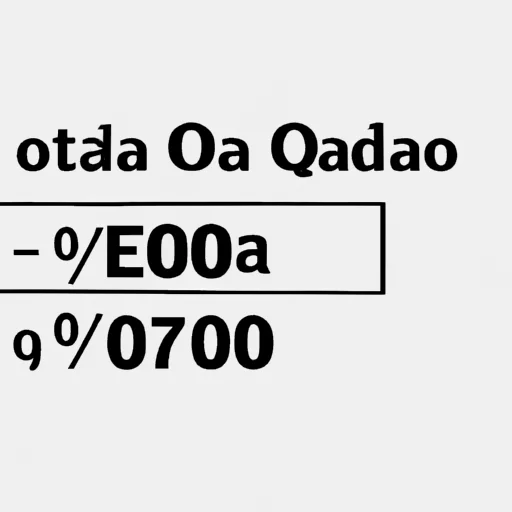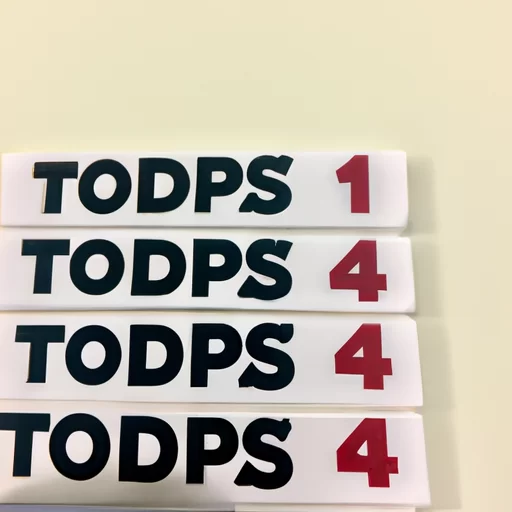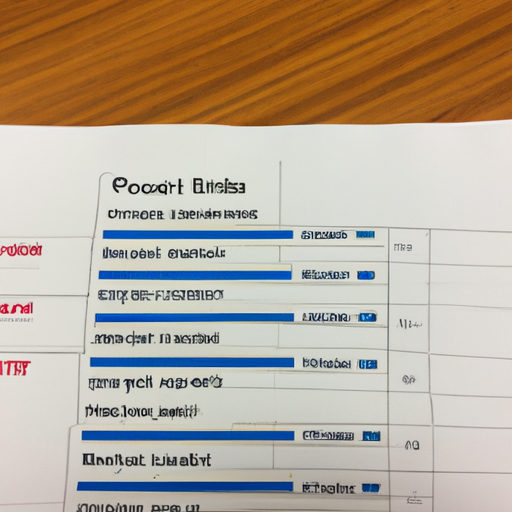 The Slot Pay By Phone Bill & Pay By Mobile Casino UK with Landline Casino, Mobile Casino Free Bonus pages at CasinoPhoneBill.com
The Slot Pay By Phone Bill & Pay By Mobile Casino UK with Landline Casino, Mobile Casino Free Bonus pages at CasinoPhoneBill.com
Odds Ratio O’que E |
-
Casino Telephone Phone Bill Articles
- Introduction
- What is an Odds Ratio and How is it Used?
- How to Interpret Odds Ratios in Statistical Analysis
- The Pros and Cons of Using Odds Ratios in Research
- Exploring the Relationship Between Odds Ratios and Confidence Intervals
- Understanding the Difference Between Relative Risk and Odds Ratios
- How to Calculate Odds Ratios in Excel
- The Benefits of Using Logistic Regression to Estimate Odds Ratios
- The Role of Odds Ratios in Clinical Trials
- Exploring the Use of Odds Ratios in Epidemiological Studies
- Comparing Odds Ratios Across Different Studies
- The Impact of Sample Size on Calculating Odds Ratios
- Exploring the Relationship Between Odds Ratios and P-Values
- Q&A
- Conclusion
“Odds Ratio O'que E: Unlocking the Energy of Likelihood!”
Introduction
Odds Ratio (OR) é uma medida de associação usada para avaliar a força da relação entre duas variáveis. É usado para determinar se existe uma associação entre duas variáveis, como o risco de desenvolver uma doença ou o efeito de um tratamento. O Odds Ratio é calculado a partir da razão entre as possibilities de ocorrência de um evento em dois grupos diferentes. É um dos métodos mais comuns usados na análise estatística para avaliar a força da associação entre duas variáveis.
What is an Odds Ratio and How is it Used?
An odds ratio is a statistical measure used to match the probability of an occasion occurring in one group to the probability of it occurring in one other group. It is calculated by dividing the odds of an occasion occurring in one group by the odds of it occurring in one other group. Odds ratios are generally used in medical analysis to match the risk of a specific consequence between two teams. For instance, a examine would possibly evaluate the odds of growing a certain type of most cancers between people who smoke and non-people who smoke. The odds ratio can be calculated by dividing the odds of growing most cancers amongst people who smoke by the odds of growing most cancers amongst non-people who smoke.
How you can Interpret Odds Ratios in Statistical Evaluation
Odds ratios are a key measure of affiliation used in statistical evaluation. They're used to match the probability of an occasion occurring in one group to the probability of it occurring in one other group. An odds ratio of 1 signifies that the occasion is equally more likely to happen in each teams, whereas an odds ratio larger than 1 signifies that the occasion is more more likely to happen in the primary group, and an odds ratio lower than 1 signifies that the occasion is more more likely to happen in the second group.
For instance, if a examine discovered that individuals who eat breakfast every single day have an odds ratio of 0.5 for growing diabetes in comparison with those that don't eat breakfast, this could point out that those that don't eat breakfast are twice as more likely to develop diabetes as those that do eat breakfast.
When decoding odds ratios, it is essential to contemplate the context of the examine and any potential confounding elements. For instance, if the examine discovered that individuals who eat breakfast every single day have an odds ratio of 0.5 for growing diabetes in comparison with those that don't eat breakfast, it could possibly be because of other elements comparable to train or weight loss plan. It is additionally essential to contemplate the dimensions of the odds ratio; a small distinction may not be statistically important or clinically significant.
In conclusion, odds ratios are a helpful measure of affiliation used in statistical evaluation. They can be used to match the probability of an occasion occurring in one group to the probability of it occurring in one other group. When decoding odds ratios, it is essential to contemplate the context of the examine and any potential confounding elements, in addition to the dimensions of the odds ratio.
The Execs and Cons of Utilizing Odds Ratios in Analysis
Odds ratios are a great tool for researchers to measure the power of an affiliation between two variables. They're usually used in epidemiological research to measure the risk of a certain consequence, such because the risk of growing a illness. Nonetheless, there are each professionals and cons to utilizing odds ratios in analysis.
Execs
One of many primary benefits of utilizing odds ratios is that they can present a more correct measure of the power of an affiliation than other measures, comparable to relative dangers. This is as a result of odds ratios take note of each the publicity and the result, whereas relative dangers solely take note of the publicity. This makes odds ratios more dependable when measuring the power of an affiliation.
One other benefit is that odds ratios can be used to match totally different teams, comparable to these with totally different ranges of publicity or totally different outcomes. This makes them helpful for evaluating totally different populations or for traits over time.
Cons
One of many primary drawbacks of utilizing odds ratios is that they can be tough to interpret. This is as a result of they're expressed as a ratio, which can be complicated for some folks. Moreover, odds ratios can be affected by confounding elements, comparable to other variables that may affect the result. Because of this it is essential to take these elements into consideration when decoding the outcomes.
One other drawback is that odds ratios usually are not at all times dependable when measuring very small associations. This is as a result of they have a tendency to overestimate small associations, which can result in inaccurate outcomes.
General, odds ratios can be a great tool for researchers to measure the power of an affiliation between two variables. Nonetheless, it is essential to contemplate each the professionals and cons earlier than utilizing them in analysis.
Exploring the Relationship Between Odds Ratios and Confidence Intervals
Odds ratios and confidence intervals are two essential ideas in statistics which are usually used collectively. An odds ratio is a measure of the power of the affiliation between two variables, whereas a confidence interval is a spread of values that is more likely to include the true worth of a inhabitants parameter.
The connection between odds ratios and confidence intervals is primarily based on the truth that an odds ratio can be used to calculate a confidence interval. This is achieved by taking the pure logarithm of the odds ratio after which multiplying it by the usual error of the log odds ratio. The outcome is then added to and subtracted from the log odds ratio to get the higher and decrease bounds of the boldness interval.
The boldness interval can then be used to interpret the power of the affiliation between two variables. If the boldness interval consists of 1, then there is no statistically important affiliation between the 2 variables. If it doesn't include 1, then there is a statistically important affiliation between them. The additional away from 1 the boldness interval is, the stronger the affiliation between the 2 variables.
In abstract, odds ratios and confidence intervals are intently associated ideas in statistics. An odds ratio can be used to calculate a confidence interval, which can then be used to interpret the power of an affiliation between two variables.
Understanding the Distinction Between Relative Danger and Odds Ratios
Relative risk and odds ratios are two essential measures used to evaluate the connection between an publicity and an consequence. Whereas they're each used to measure the power of an affiliation, they don't seem to be interchangeable. It is essential to know the distinction between relative risk and odds ratios in order to precisely interpret analysis outcomes.
Relative risk is a measure of the risk of an occasion occurring in one group in comparison with one other. It is calculated by dividing the chance of an occasion occurring in one group by the chance of it occurring in one other group. For instance, if the chance of a coronary heart assault occurring in a bunch of people who smoke is twice as high because the chance of it occurring in a bunch of non-people who smoke, then the relative risk of a coronary heart assault for people who smoke is 2.
Odds ratios, on the other hand, measure the odds that an occasion will happen in one group in comparison with one other. It is calculated by dividing the odds of an occasion occurring in one group by the odds of it occurring in one other group. For instance, if the odds of a coronary heart assault occurring in a bunch of people who smoke is twice as high because the odds of it occurring in a bunch of non-people who smoke, then the odds ratio for people who smoke is 2.
In abstract, relative risk and odds ratios are two totally different measures used to evaluate the power of an affiliation between an publicity and an consequence. Relative risk measures the risk of an occasion occurring in one group in comparison with one other, whereas odds ratios measure the odds that an occasion will happen in one group in comparison with one other. Understanding the distinction between these two measures is important for precisely decoding analysis outcomes.
How you can Calculate Odds Ratios in Excel
Odds ratios are a great tool for evaluating the probability of an occasion occurring in two totally different teams. Excel can be used to calculate odds ratios, permitting you to rapidly and simply evaluate the probability of an occasion occurring in one group versus one other. Right here's tips on how to calculate odds ratios in Excel:
1. Start by getting into the info into two columns. Within the first column, enter the number of individuals in every group who skilled the occasion. Within the second column, enter the number of individuals in every group who didn't expertise the occasion.
2. Subsequent, calculate the odds ratio by dividing the number of individuals in one group who skilled the occasion by the number of individuals in that very same group who didn't expertise the occasion. For instance, if 10 folks in Group A skilled the occasion and 20 folks in Group A didn't expertise the occasion, then the odds ratio for Group A can be 0.5 (10/20).
3. Repeat this course of for Group B, dividing the number of individuals in Group B who skilled the occasion by the number of individuals in Group B who didn't expertise the occasion.
4. Lastly, evaluate the 2 odds ratios by subtracting one from the other. The outcome is your odds ratio. For instance, if Group A's odds ratio is 0.5 and Group B's odds ratio is 0.7, then your odds ratio can be 0.2 (0.7 – 0.5). Because of this Group B is twice as more likely to expertise the occasion than Group A.
The Advantages of Utilizing Logistic Regression to Estimate Odds Ratios
Logistic regression is a robust software for estimating odds ratios, that are used to measure the power of the connection between two variables. This type of study is usually used in medical analysis to evaluate the risk of a specific consequence primarily based on certain elements. Logistic regression has a number of benefits over other strategies of estimating odds ratios.
First, logistic regression is more correct than other strategies. It takes into consideration a number of elements and can account for interactions between them, which can result in more correct estimates. Moreover, logistic regression can be used to estimate odds ratios for each steady and categorical variables, making it a flexible software for researchers.
Second, logistic regression is comparatively simple to make use of. It requires minimal information preparation and can be used with any type of knowledge set. This makes it an excellent selection for researchers who have to rapidly analyze information and generate outcomes.
Lastly, logistic regression is extremely interpretable. The outcomes of the evaluation can be simply understood and defined to others. This makes it an excellent selection for researchers who want to speak their findings to a large viewers.
General, logistic regression is an efficient and environment friendly approach to estimate odds ratios. It is correct, simple to make use of, and extremely interpretable, making it an excellent selection for researchers who have to rapidly analyze information and generate outcomes.
The Function of Odds Ratios in Medical Trials
Odds ratios are an essential software used in medical trials to measure the effectiveness of a remedy or intervention. They're used to match the probability of an consequence occurring in one group versus one other. For instance, if a medical trial is testing a brand new drug to deal with a certain situation, the odds ratio can be used to match the probability of the situation bettering in the group taking the drug versus the group taking a placebo.
Odds ratios are calculated by dividing the odds of an occasion occurring in one group by the odds of it occurring in one other group. For instance, if the odds of a situation bettering in the group taking the drug are 2:1, and the odds of it bettering in the group taking the placebo are 1:2, then the odds ratio can be 2:1. Because of this there is twice as much probability of the situation bettering in the group taking the drug than in the group taking the placebo.
Odds ratios can even be used to measure other outcomes comparable to negative effects or adversarial occasions. On this case, a better odds ratio signifies that there is a larger probability of experiencing an adversarial occasion in one group in comparison with one other.
Odds ratios are an essential software for decoding medical trial outcomes and making choices about therapies and interventions. They supply a quantitative measure of how efficient a remedy or intervention is in comparison with one other, and can help clinicians and researchers make knowledgeable choices about which therapies or interventions are almost certainly to be profitable.
Exploring the Use of Odds Ratios in Epidemiological Research
Odds ratios are a great tool in epidemiological research, as they supply a measure of the power of an affiliation between two variables. An odds ratio is calculated by dividing the odds of an occasion occurring in one group by the odds of it occurring in one other group. For instance, if the odds of an individual growing a certain illness are twice as high in one group in comparison with one other, then the odds ratio can be 2.
Odds ratios are sometimes used to match the risk of growing a illness between totally different teams. For instance, if researchers needed to match the risk of growing lung most cancers between people who smoke and non-people who smoke, they may calculate the odds ratio for every group. This may give them a sign of how much more doubtless people who smoke are to develop lung most cancers than non-people who smoke.
Odds ratios can even be used to match the effectiveness of various therapies for a specific situation. For instance, if researchers needed to match the effectiveness of two totally different medicine for treating hypertension, they may calculate the odds ratio for every drug. This may give them a sign of which drug is more efficient at lowering blood strain.
Odds ratios can even be used to match the risk of growing a illness between totally different populations. For instance, if researchers needed to match the risk of growing diabetes between African People and Caucasians, they may calculate the odds ratio for every inhabitants. This may give them a sign of how much more doubtless African People are to develop diabetes than Caucasians.
General, odds ratios are a great tool for epidemiological research as they supply a measure of the power of an affiliation between two variables. They can be used to match the risk of growing a illness between totally different teams or populations, in addition to to match the effectiveness of various therapies for a specific situation.
Evaluating Odds Ratios Throughout Completely different Research
Evaluating odds ratios throughout totally different research can be a helpful approach to consider the power of proof for a specific speculation. An odds ratio is a measure of the power of an affiliation between two variables, and it is calculated by dividing the odds of an occasion occurring in one group by the odds of it occurring in one other group. For instance, if the odds of an occasion occurring in one group are twice as high because the odds of it occurring in one other group, then the odds ratio can be 2.
When evaluating odds ratios throughout totally different research, it is essential to contemplate the context in which the research had been performed. Completely different research may have used totally different strategies or checked out totally different populations, which may have an effect on the outcomes. It is additionally essential to contemplate any potential confounding elements that might have influenced the outcomes.
As well as, it is essential to contemplate the statistical significance of the outcomes. If the odds ratio is statistically important, then it signifies that there is a powerful affiliation between the 2 variables being studied. If the odds ratio is not statistically important, then it signifies that there is no sturdy affiliation between the 2 variables being studied.
Lastly, it is essential to contemplate any potential biases that might have affected the outcomes. Completely different research may have used totally different strategies or checked out totally different populations, which may introduce bias into the outcomes. It is additionally essential to contemplate any potential confounding elements that might have influenced the outcomes.
By contemplating all of those elements when evaluating odds ratios throughout totally different research, researchers can get a greater understanding of how sturdy an affiliation between two variables actually is.
The Influence of Pattern Measurement on Calculating Odds Ratios
The pattern dimension of a examine is an essential issue to contemplate when calculating odds ratios. An odds ratio is a measure of affiliation between two variables, and it is calculated by dividing the odds of an occasion occurring in one group by the odds of it occurring in one other group. The bigger the pattern dimension, the more dependable the odds ratio can be.
When the pattern dimension is small, the odds ratio may not precisely mirror the true relationship between the 2 variables. This is as a result of small samples are more more likely to include outliers or excessive values that can skew the outcomes. Moreover, small samples may not be consultant of the inhabitants as an entire, which can result in inaccurate outcomes.
On the other hand, when the pattern dimension is massive, the odds ratio can be more dependable. This is as a result of massive samples are much less more likely to include outliers or excessive values that can skew the outcomes. Moreover, massive samples are more doubtless to be consultant of the inhabitants as an entire, which can result in more correct outcomes.
In conclusion, pattern dimension is an essential issue to contemplate when calculating odds ratios. Small pattern sizes may result in inaccurate outcomes, whereas massive pattern sizes are more more likely to produce dependable outcomes. Subsequently, researchers ought to attempt to make use of massive pattern sizes at any time when doable in order to ensure correct outcomes.
Exploring the Relationship Between Odds Ratios and P-Values
Odds ratios and p-values are two essential statistical measures used to guage the power of a relationship between two variables. Odds ratios measure the power of the affiliation between two variables, whereas p-values measure the chance that the noticed relationship is because of probability.
Odds ratios are calculated by dividing the odds of an occasion occurring in one group by the odds of it occurring in one other group. For instance, if the odds of an occasion occurring in group A are twice as high because the odds of it occurring in group B, then the odds ratio can be 2. The upper the odds ratio, the stronger the affiliation between the 2 variables.
P-values measure the chance that an noticed relationship is because of probability. A p-worth of 0.05 or much less signifies that there is a statistically important relationship between two variables. The decrease the p-worth, the more doubtless it is that the noticed relationship is not because of probability.
The connection between odds ratios and p-values is advanced. Typically talking, a better odds ratio signifies a stronger relationship between two variables, and a decrease p-worth signifies a stronger relationship as properly. Nonetheless, it is essential to notice {that a} high odds ratio doesn't essentially imply that there is a statistically important relationship; a low p-worth should even be current for this to be true. Equally, a low p-worth doesn't essentially imply that there is a powerful affiliation between two variables; a high odds ratio should even be current for this to be true.
In conclusion, whereas there is a relationship between odds ratios and p-values, it is essential to contemplate each measures when evaluating the power of an affiliation between two variables.
Q&A
Odds Ratio (OR) é uma medida de associação usada em estudos epidemiológicos para avaliar a força da relação entre duas variáveis. Ele é calculado como a razão entre as possibilities de ocorrência de um evento em dois grupos diferentes.
1. O que é Odds Ratio?
R: Odds Ratio (OR) é uma medida de associação usada em estudos epidemiológicos para avaliar a força da relação entre duas variáveis.
2. Como o Odds Ratio é calculado?
R: O Odds Ratio é calculado como a razão entre as possibilities de ocorrência de um evento em dois grupos diferentes.
3. Quais são os principais usos do Odds Ratio?
R: O Odds Ratio é usado principalmente para avaliar a força da associação entre duas variáveis, como fatores de risco e desfechos, em estudos epidemiológicos.
4. Quais são os principais benefícios do uso do Odds Ratio?
R: Os principais benefícios do uso do Odds Ratio incluem a capacidade de comparar a força da associação entre duas variáveis, independentemente da prevalência dos eventos, e a capacidade de avaliar o efeito relativo de vários fatores de risco em um desfecho.
5. Quais são as limitações do uso do Odds Ratio?
R: As principais limitações do uso do Odds Ratio incluem a incapacidade de avaliar diretamente o efeito absoluto de um fator de risco em um desfecho, bem como a incapacidade de avaliar o efeito causal entre duas variáveis. Além disso, o Odds Ratio não pode ser usado para avaliar a associação entre mais de duas variáveis.
6. Quando devo usar o Odds Ratio?
R: O Odds Ratio é adequado para avaliar a força da associação entre duas variáveis, como fatores de risco e desfechos, em estudos epidemiológicos.
Conclusion
The Odds Ratio is a great tool for measuring the power of an affiliation between two variables. It can be used to match the probability of an occasion occurring in one group versus one other, and can help determine potential risk elements for a specific consequence. By understanding the Odds Ratio, researchers can acquire useful perception into the relationships between totally different variables and make more knowledgeable choices about their analysis.

























